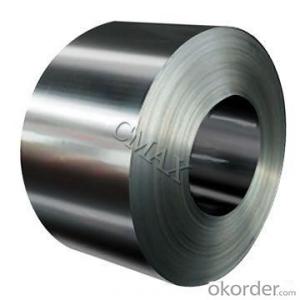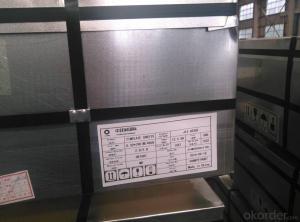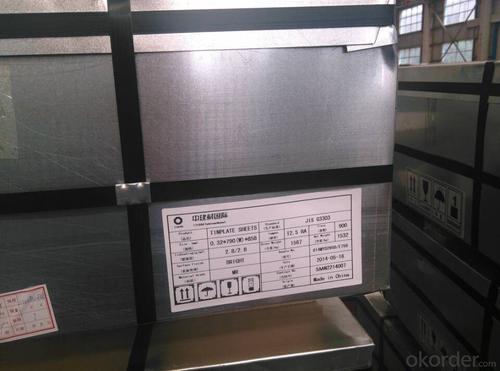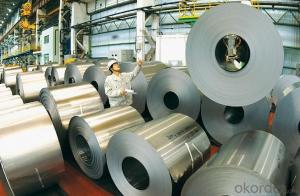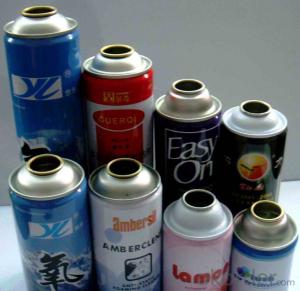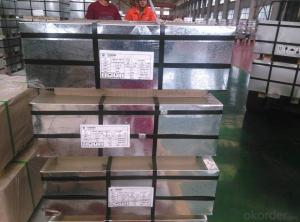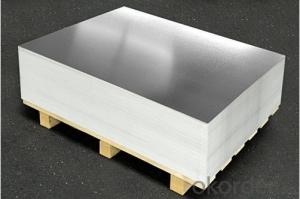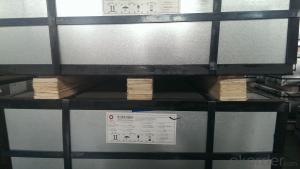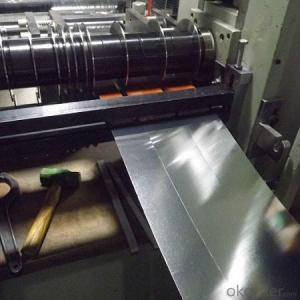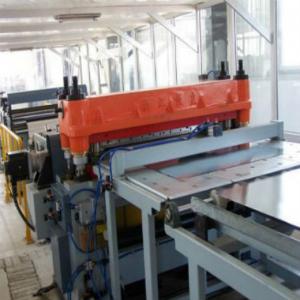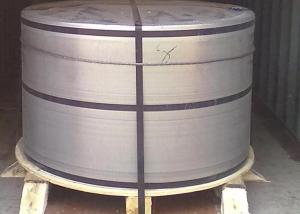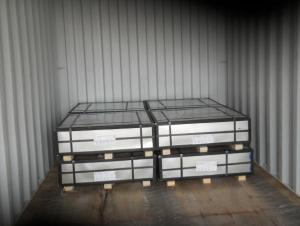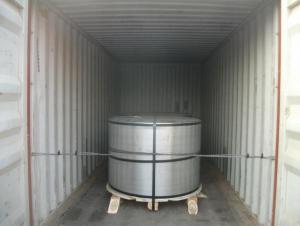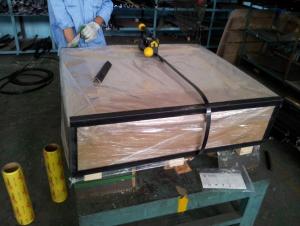MR Tinplate For Food Cans, CA BA, Best Quality in China
- Loading Port:
- China main port
- Payment Terms:
- TT OR LC
- Min Order Qty:
- 25 m.t.
- Supply Capability:
- 40000 m.t./month
OKorder Service Pledge
OKorder Financial Service
You Might Also Like
1.Usage
Tinplate is widely used for making all types of containers, containing industrial usage such as paint can, oil can, aerosol cans etc., and food cans like milk powder cans, tomato paste can, dry food cans etc.
2. Specification
standard: GB/T2520, JIS G3303, DIN EN10202
Material: MR /SPCC
Thickness available: 0.16-0.50MM
Width available: 600~1050MM
Temper grade: T1 – DR8
Tin coating: ordinary 2.8g/2.8g, 5.6g/5.6g and others
Package: sea worthy export package.
Applications: Tin can for chemicals & paint cans, industrial cans, food cans
3. Our factory photo & equipments

4. FAQ
a. what's the annual output?
about 500,000 tons per year.
b. where's the raw matrial from?
our hot rolled coil is purchased from Capital Steel and other state owned mill, with quite good quality.
c. how long is the delivery time?
normally for SPCC about 45~55 days, while 65~75 days for MR material
d. how to control the quality during production process?
inside our workshop, we have MES syestem. It realizes the optimization of the production procedure in the workshop. It could record each step of the whole production procedures, and if some problem appears, factory could easily found and take action, it’s quite helpful to monitor and control the quality.
- Q: What are the main applications of tinplate in the telecommunications industry?
- Tinplate is primarily used in the telecommunications industry for manufacturing high-frequency transformers and inductor cores. It is also utilized for shielding and grounding components due to its excellent electrical conductivity. Additionally, tinplate is commonly used in the production of waveguides, coaxial cables, and other electronic equipment where its corrosion resistance and mechanical stability are advantageous.
- Q: How does tinplate perform in terms of lightness and portability?
- Tinplate is relatively lightweight and portable due to its thin and flexible nature. It can be easily carried and transported, making it a convenient choice for various applications.
- Q: And what are the main packing materials?
- Currently on the market and it is mainly two kinds of packaging: PET plastic bottles and cans cans of Maguchi Tetsumi.Pet Chinese means: polybutylene terephthalate mainly consists of polyethylene terephthalate, two ester PET and polybutylene terephthalate Ding Erzhi PBT. Polyethylene terephthalate is also commonly known as polyester resin, commonly known as polyester resin. It is a condensation of terephthalic acid with ethylene glycol and is collectively referred to as thermoplastic polyester, or saturated polyester, with PBT.
- Q: What are the different methods of joining tinplate components together?
- There are several methods of joining tinplate components together, including soldering, welding, riveting, and adhesive bonding. Each method has its own advantages and is chosen based on factors such as the required strength, aesthetics, and production efficiency of the final assembly.
- Q: How is tinplate coated?
- Tinplate is coated through a process called electroplating, where a thin layer of tin is applied onto the surface of steel or iron. This is done by immersing the metal into an electrolyte solution along with a tin anode and passing an electric current through the setup. The electric current causes tin ions to be attracted to the metal surface, forming a protective coating of tin on both sides of the tinplate.
- Q: What are the different methods of recycling tinplate packaging?
- There are several methods of recycling tinplate packaging, including sorting and separating the tinplate from other materials, such as paper or plastic, at recycling facilities. The tinplate is then melted down and shaped into new products or used as a raw material in manufacturing industries. Additionally, tinplate packaging can be reused by consumers for storage or repurposed into various household items.
- Q: How can tinplate be rustproof? Products must not be oil
- RP014C-23A thin layer quick drying antirust oil is made up of film forming agent, oil soluble corrosion inhibitor and refined petroleum solvent. It is a kind of volatile long-term antirust oil.
- Q: How does the tin coating affect the weldability of tinplate?
- The tin coating on tinplate improves the weldability of the material. It acts as a protective layer, preventing oxidation and promoting better adhesion during the welding process. This ensures a stronger and more reliable weld.
- Q: What are the different methods of storing tinplate packaging?
- Some of the different methods of storing tinplate packaging include stacking the tinplates on shelves or pallets, organizing them in bins or containers, using racks or hooks to hang them, or placing them in specialized storage cabinets or drawers. It is important to ensure that the storage environment is clean, dry, and free from any potential sources of damage such as moisture, extreme temperature, or direct sunlight.
- Q: Can tinplate be used for packaging products with sensitive electronic components?
- No, tinplate cannot be used for packaging products with sensitive electronic components as it can cause electromagnetic interference and potentially damage the components.
Send your message to us
MR Tinplate For Food Cans, CA BA, Best Quality in China
- Loading Port:
- China main port
- Payment Terms:
- TT OR LC
- Min Order Qty:
- 25 m.t.
- Supply Capability:
- 40000 m.t./month
OKorder Service Pledge
OKorder Financial Service
Similar products
Hot products
Hot Searches
Related keywords
